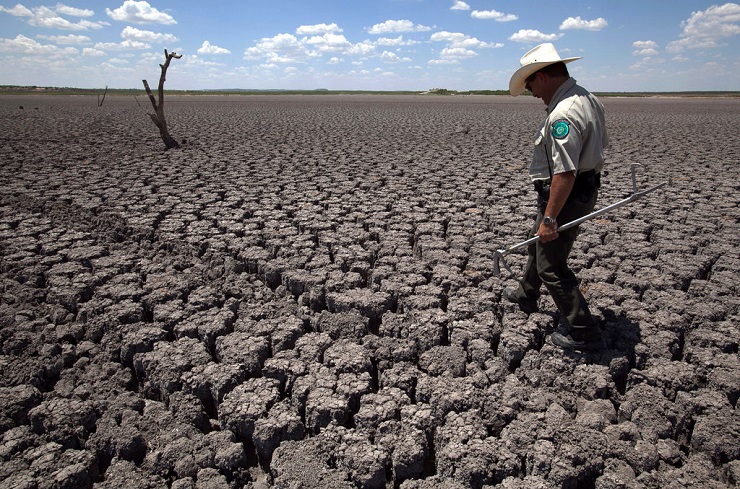Leading climate scientists have been discussing abnormal heat levels registered this summer in Europe and in other regions of the world. The general consensus is that this anomaly is a sign of global warming, which is believed to be caused by our irresponsible use of resources. The impacts are a plenty, including fires, floods, drought, abnormal heat. No matter what you believe in, the climate we live in is changing rapidly with every passing day, forcing us to face the consequences nobody initially anticipated. Last year alone, the losses suffered from natural disasters by various countries of the world exceeded 353 billion dollars.
Scientists say that by the end of the century, extreme heat waves capable of killing the entire population of a town in a couple of hours will hit India, Pakistan and Bangladesh.
According to the National Oceanic and Atmospheric Administration (NOAA), recent years have been marked by an abrupt decline in arctic sea ice, which resulted in the global sea level rising by 3 inches, exceeding the all time high registered some 25 years ago. Moreover, the temperature of Arctic seas has also risen by up to 4 degrees in comparison with the average annual temperatures.
Global warming is also associated with intense hurricane seasons striking various regions of the world. Those seasons produce such devastating hurricanes like Maria that left the entire Caribbean coast in ruins, along with Harvey that brought unprecedented rainfalls to Texas and Louisiana. At the same time, the Middle East had to deal with extreme drought. In some regions of Syria, Lebanon and Israel there hasn’t been no rains at all. The summer heat stroke the south of California, the east of Canada and Scandinavia, with the temperature along the northern coast of Russia reaching 86 °F. Over the course of last July, there was a total of 118 temperature records registered across the world. Last year, at least 330 different natural disasters caused by climate change occurred across the planet.
According to the MIT study released in the Nature Communications journal, extreme heat and extreme humidity growth threatens one of the most densely populated areas on Earth – the Great Plain of China, that is where Beijing is located. This could lead to the situation where by the year 2070 the region that serves as a home for some 400 million people will become completely unsuitable for habitation. This is the third similar study by MIT on how densely populated regions of the world can be threatened by extreme temperatures, with the first two examining the future of the Persian Gulf and South Asia. However, in the case of the Great Chinese Plain, scientists see a much greater risk to the local population, with the temperature in this region already becoming twice as warm on the average. In 2013, extreme heat in this region lasted for a record of 50 days, with certain regions suffering from temperatures of 100 °F. In one of the largest cities in the east of China, Shanghai, back in 2013, a 141-year temperature record was recorded, leading to the early demise of several dozen people.
Most scientists agree that climate change poses a grave danger to the planet, however, among the threats typically associated with this phenomena the deteriorating global security looks like the most frightening one.
It’s been noted that back in 2008, when severe weather cut into the world’s grain supply and drove up food prices, countries ranging from Morocco to Indonesia experienced social and political upheavals. More recently, food insecurity has been used as a weapon in the wars in Yemen and Syria.
According to the Center for Climate and Security, failure to address such “climate-driven risks” could lead to increased fighting over water, food, energy, and land, particularly in already unstable regions.
One of the recent studies associated a 14% in the number of conflicts with the rising temperature levels. Moreover, psychological studies have shown that when people are subjected to uncomfortably hot temperatures, they show increased levels of aggression.
In Sub-Saharan Africa, researchers have found a strong correlation between three decades of rising temperatures and outbreaks of civil war. If warming trends continue, civil wars and other conflicts will become more common in Africa, the South China Sea, the Arctic, Central America, and elsewhere.
It’s been rightly pointed out that avoiding such outcomes will require renewed commitment to multilateral treaties such as the 2015 Paris climate agreement, which has been weakened by the withdrawal of the United States. Additionally, new strategies are needed to coordinate disaster-relief efforts.
Grete Mautner is an independent researcher and journalist from Germany, exclusively for the online magazine “New Eastern Outlook.”

